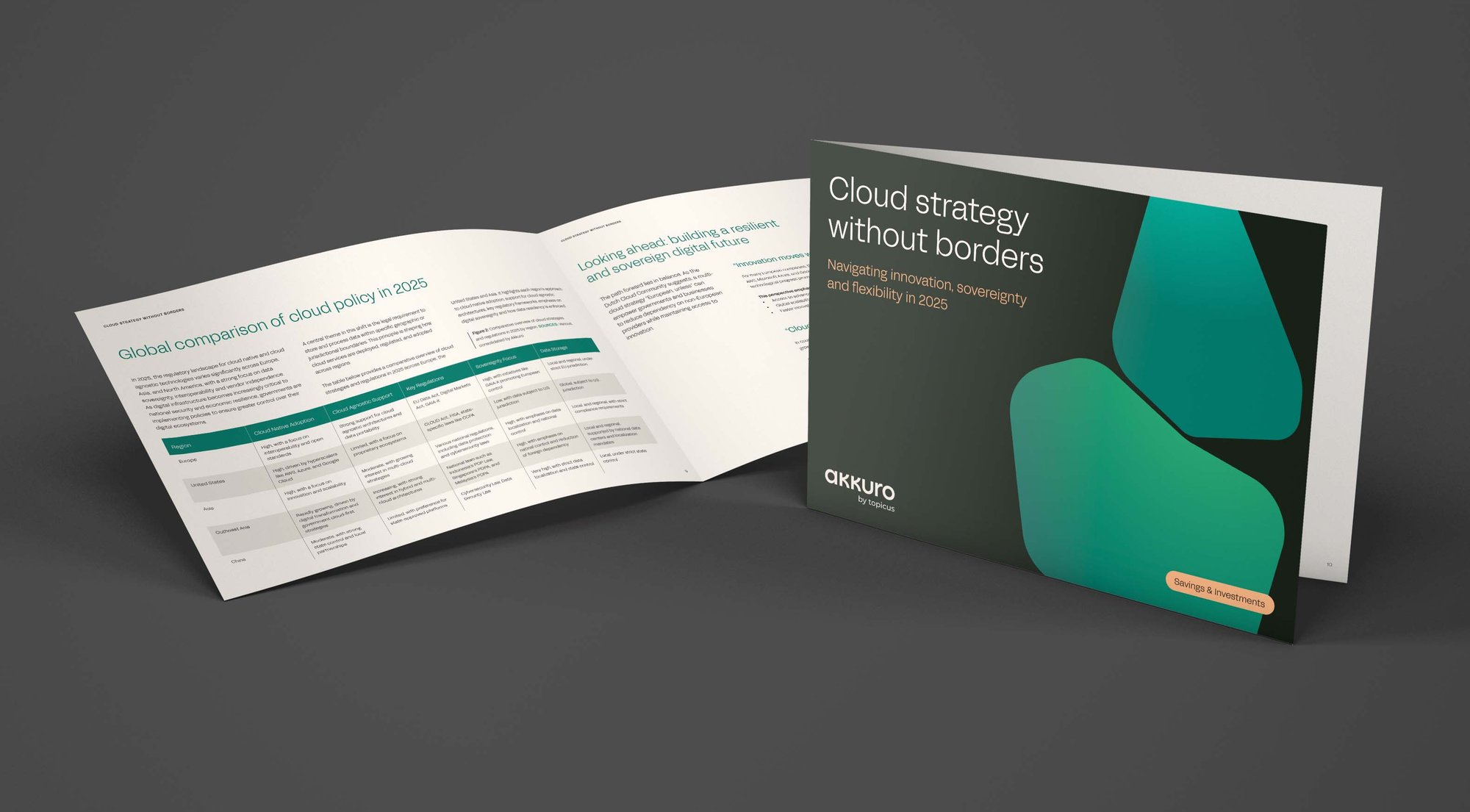Balancing sovereignty and agility: the new cloud imperative for finance


Cloud is no longer just about infrastructure. For financial institutions, it has become a strategic arena where innovation, sovereignty and long-term control converge. In a climate shaped by evolving regulation, geopolitical uncertainty and rising expectations around digital resilience, your cloud strategy speaks volumes about how prepared you are for what’s next.
Summary
-
Cloud strategy is now a strategic business decision. Financial institutions must balance innovation with sovereignty and compliance in a regulatory environment that’s becoming more complex and fragmented.
-
There’s no one-size-fits-all model. From hybrid and multicloud to sovereign cloud solutions, each approach offers unique trade-offs. The right choice depends on your ability to stay agile without losing control.
Find out how evolving regulations and geopolitical pressure are redefining cloud architecture choices.
Today, public cloud platforms offer compelling advantages: speed, scalability and access to cutting-edge technologies. But they also introduce difficult questions about jurisdiction, vendor dependency and operational continuity. That’s why many organizations are pivoting toward hybrid or multicloud setups to strike a more deliberate balance between flexibility and accountability.
Yet there’s no single path. European institutions, in particular, are navigating a complex regulatory landscape, from the EU’s Digital Operational Resilience Act (DORA) to the NIS2 Directive and the implications of foreign legislation like the U.S. CLOUD Act. These forces are reshaping what it means to remain compliant, agile and in control of sensitive workloads.
Rethinking control in a connected world
As data becomes more distributed and regulations tighten, cloud decisions are increasingly about control where it resides, who enforces it and how it aligns with strategic priorities. For some institutions, that means pursuing sovereign cloud solutions that minimize foreign influence. For others, it means designing multicloud environments that reduce lock-in and improve operational resilience.
What’s clear is that agility and sovereignty no longer have to be mutually exclusive. With the right architectural choices, financial institutions can modernize securely, scale intelligently and comply consistently across jurisdictions.
“Cloud decisions today are ultimately decisions about control. The institutions that succeed will be those able to combine innovation with clear boundaries of accountability.”

Cloud strategy is now business strategy
By 2025, most enterprises will be operating in hybrid or multicloud environments. But less than 10% will have a mature strategy in place to govern risk, interoperability and compliance across platforms. That gap is where competitive advantage is either gained or lost.
Our latest report, Cloud strategy without borders, explores:
-
How regulatory pressure is accelerating the need for cloud-native compliance
-
The operational risks of cloud dependency and how to mitigate them
-
Real-world strategies for balancing innovation with sovereignty
-
What a future-proof cloud strategy looks like in the financial sector
For financial institutions, there is no universal model. Each organization will need to weigh its priorities resilience, sovereignty, innovation and cost and chart a course accordingly.

- Savings
Empowering your bank
Offer customizable term deposits, dynamic variable interest accounts and intuitive tools to streamline operations, boost profitability and enhance client experiences.
Discover moreDownload the report
Cloud strategy without borders: navigating innovation, data, sovereignty and flexibility in 2025.
Please enter your details and we’ll email you the download link for the Cloud strategy without borders report.




